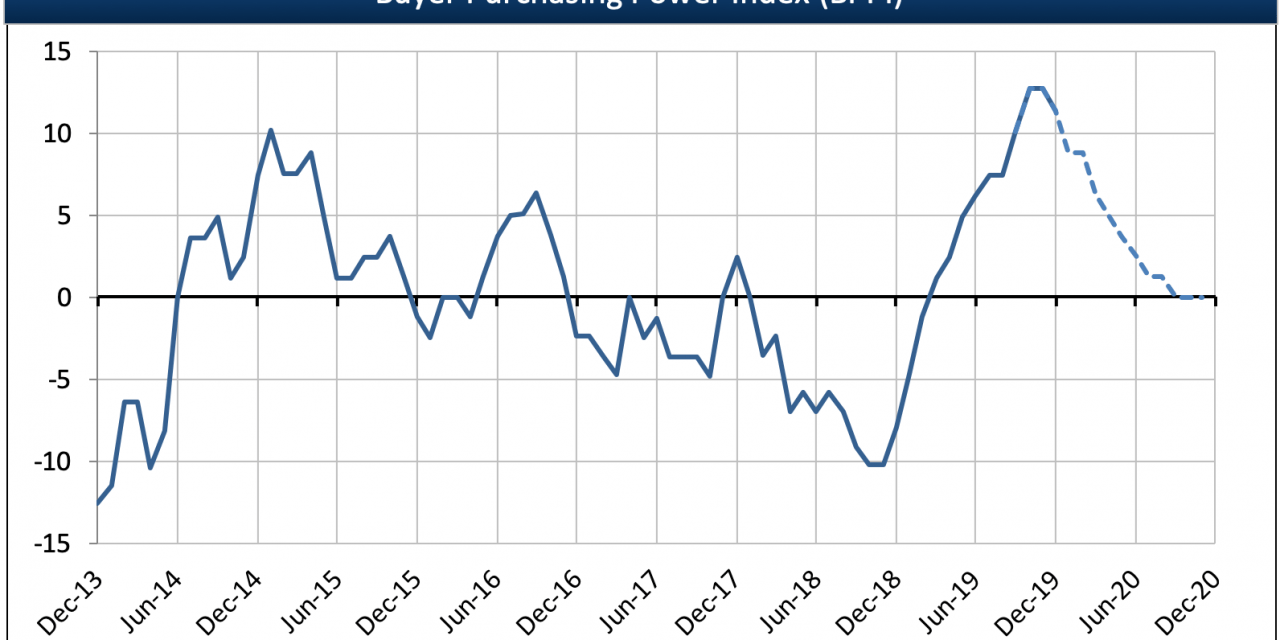The California Buyer Purchasing Power Index (BPPI) figure was +11.4 in December 2019. This positive figure tells us a homebuyer with the same income is able to borrow 11.4% more today than a year ago. The BPPI figure was positive throughout 2019 as a result of lower year-over-year mortgage rates.
In the second half of 2019, the Federal Reserve (the Fed) began to decrease their benchmark interest rate, which influences mortgage interest rates. When the Fed was still raising rates in 2018, fixed rate mortgage (FRM) rates edged higher, resulting in a negative BPPI figure. But when the Fed signaled they were finished raising rates in 2019, FRM rates fell back in anticipation of lower short-term rates.
first tuesday expects FRM rates to remain near their present low level in 2020, causing the BPPI figure to remain positive in the coming months, eventually flattening out by the end of 2020. The Fed is reining in interest rates going into the next recession, forecasted to arrive by mid-2020. As we head into the next recession, home sales volume will continue its decline started in 2018, with prices following.
The long-term outlook for the BPPI is a decades’ long period of descent as mortgage rates rise with renewed growth in our economy. Sellers can expect downward pressure on home prices in the coming years, as buyers are limited to borrowing less over the coming decades with the same income.

Chart update 01/04/20
| Dec 2019 | Nov 2019 | Dec 2018 | |
| Buyer Purchasing Power Index (BPPI) | +11.4 | +12.7 | -8.0 |
About the BPPI
The Buyer Purchasing Power Index (BPPI) is calculated using the average 30-year fixed rate mortgage (FRM) rate from Freddie Mac (Western region) and the median income in California.
A positive index number means buyers can borrow more money this year than one year earlier.
A negative index figure translates to a reduced amount of mortgage funds available.
An index of zero means there was no year-over-year change in the amount a buyer can borrow with the same income. At a BPPI of zero, homebuyers cannot purchase at higher prices than one year before unless they resort to adjustable rate mortgages (ARMs) to extend their borrowing reach or greater down payment amounts.
As long-term BPPI trend declines, the capacity of buyers to borrow purchase-assist funds is reduced. In turn, buyers needing purchase-assist financing on average can only pay a lesser price for a home. To keep the inventory of homes for sale moving at the same pace, sellers will need to lower prices to accommodate buyer purchasing power or pull their properties off the market.
—
first tuesday journal online is a real estate news source. It provides analyses and forecasts for the California real estate market, and has done so since 1978.


















